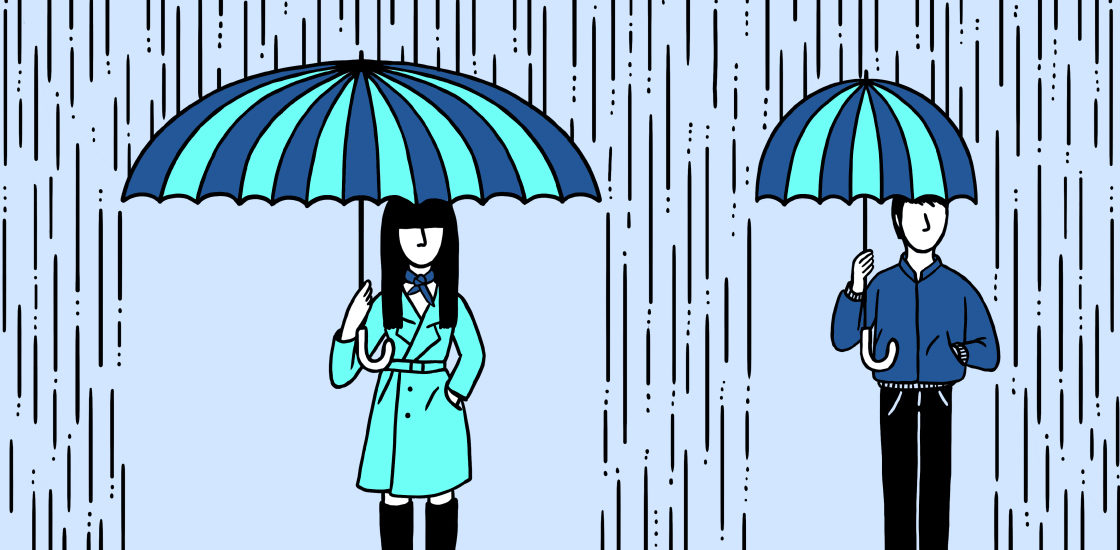The female protective effect, explained
One of the leading theories of autism posits that girls and women are biologically protected from the condition.

One of autism’s most persistent puzzles is why four times as many boys are diagnosed with the condition as girls.
Diagnostic bias partly explains this ratio. A leading theory of autism, the ‘female protective effect,’ also offers a powerful explanation. The theory suggests that girls and women are biologically shielded from autism.
Here we explain the theory and step through the data that support or undermine it.
What are the origins of the female protective effect theory?
In the 1980s, Luke Tsai, then at the University of Michigan in Ann Arbor, found that autistic girls have more relatives with autism or certain language impairments, on average, than do boys with the condition1. This finding hints that girls need to inherit more factors related to autism than boys do to show traits of the condition. Several large studies since then have supported Tsai’s observation.
What evidence supports this theory?
The most compelling evidence for the theory comes from several large studies of families or twins. One study found that the younger siblings of autistic girls are more likely to also have the condition than are the younger siblings of autistic boys2. Other studies suggest that girls are more resistant to mutations linked to autism than boys are — that is, girls may carry the same mutations as autistic boys and yet not have the condition.
Some studies suggest that more mutations, or ‘hits,’ are required to trigger autism in girls than in boys. A 2011 study showed that autistic girls have more spontaneous DNA duplications or deletions, called copy number variations (CNVs), than autistic boys do3; another study confirmed the finding three years later4. This study also reported that autistic girls are three times as likely as boys to carry CNVs that include autism genes.
Some animal experiments also support the theory. Female mice with a deletion in the 16p11.2 chromosomal region, which is linked to autism, do not have the learning problems that males with the deletion do; they appear to compensate for the loss through a protein called ERK. Another team found that females in a different mouse strain that have the 16p11.2 deletion compensate behaviorally.
Could diagnostic bias, rather than this protective effect, explain autism’s sex ratio?
Yes. Autism manifests differently in girls than it does in boys. But the tools used to diagnose and screen for autism are based primarily on data from boys. They often do not account for variation in autism characteristics across sexes.
As a result, many autistic women and girls are diagnosed with the condition late or not at all. This underdiagnosis may have led to a skewed sex ratio.
Is there evidence contradicting the female protective effect?
Yes, but not much.
If autistic girls carry more familial risk factors than autistic boys, the siblings of autistic girls should also be at a heightened risk for autism or autism traits. But some scientists have found the opposite.
A 2015 study found no association between the sex of autistic children and the extent of autism traits in their younger siblings5. However, a 2013 study showed that siblings of autistic girls have more autism traits than do siblings of autistic boys6. Overall, there is more support for the theory than against it.
Why is it important to study this effect?
Characterizing the factors that protect girls from autism could help researchers develop targeted treatments or lower the risks associated with the condition.
But pinning down a biological explanation for the female protective effect must come first. So far, all the evidence in support of the theory is indirect. Ideally, scientists would identify specific aspects of molecular pathways in girls that underlie their resistance to autism.
One team is studying sex differences in the brains of autistic individuals; another is searching the genomes of large numbers of girls for genetic variants that might explain the protective effect7.
References:
- Tsai L. et al. J. Autism Dev. Disord. 11, 165-173 (1981) PubMed
- Werling D.M. and D.H. Geschwind Mol. Autism 6, 27 (2015) PubMed
- Levy D. et al. Neuron 70, 886-897 (2011) PubMed
- Jacquemont S. et al. Am. J. Hum. Genet. Epub ahead of print (2014) PubMed
- Messinger D.S. et al. Mol. Autism 6, 32 (2015) PubMed
- Robinson E.B. et al. Proc. Natl. Acad. Sci. USA 110, 5258-5262 (2013) PubMed
- Gockley J. et al. Mol. Autism 6, 25 (2015) PubMed
Recommended reading

INSAR takes ‘intentional break’ from annual summer webinar series

Dosage of X or Y chromosome relates to distinct outcomes; and more
Explore more from The Transmitter

Machine learning spots neural progenitors in adult human brains
Xiao-Jing Wang outlines the future of theoretical neuroscience

